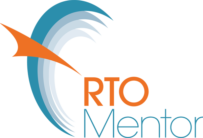We are always in a constant state of change, even if you think something is robust, it still is vulnerable. Recently we moved to the country. This doesn’t affect the business and servicing clients, however it certainly was a huge change for everyone involved. Change causes all sorts of emotions to appear, and often shows you where systems are either falling down or lacking.
This got me thinking about the RTOs that I have managed and how change effects them. Sometimes we think our RTO has solid structures in place, yet when change happens we see a different side. We must consider how strong the structures are, and if they are supporting our students, our stakeholders, our staff and of course our business.
The constant change reminds of a termite nest (now that I live near many of them), one that stands up to metres high, and is built on intricate structures. To some this is a robust structure. When it is dry it sure is. Yet when the weather changes and storms come with heavy rainfalls, the mounds will adjust their structure according to the conditions in the area, such as the onset of heavy rain.
Big mounds can house millions of termites, just like our business can service many clients. Mounds have to lose and hold water, trap and radiate heat, keep out predators, house the colony and store food. Similar to a business, it has many areas it needs to service, and many areas of continual improvement.
RTO Journey
Part of the journey we take with RTOs is to find out what is happening with their continuous improvement, the feedback results and constant monitoring of the RTO environment. This is an area that ASQA/TAC auditors review. as part of this process it is expected that RTOs regularly review its policies, procedures and processes to ensure they continue to comply with the RTO Standards and all relevant legislation. Policies and procedures are the backbone of the RTO and by following what they say assists the organisation to achieve quality in the areas of student enrolment, marketing, training and meeting your client needs. What happens in reality is that they get forgotten in the daily tasks of managing the students and trainers.
Continuous Improvement
Continuous improvement of RTO systems is an area that RTO’s often fall down in according to my conversations with accrediting bodies. So often RTOs are not doing what they say they are doing in their policies and procedures. Therefore you could be risking non-compliance.
So what do RTO systems look like?
There isn’t one answer; instead there are many.
They could look like:
- Having up-to-date (to the RTO Standards 2015) documented policies and procedures.
- Having mechanisms in your policies and procedures that show how you collect regular, valid and reliable feedback from stakeholders, such as your students, staff and employers.
- Validation plans being implemented
- Assessment that is regularly monitored, reviewed and improved.
- Meeting student, USI, complaints and appeals requirements
- A procedure to show how you regularly consult industry
If you are looking at purchasing the latest version of the required policies and procedures then RTO Mentor has our highly regarded Policy and Procedure manual that is ASQA/TAC Audit tested over many audits (to the 2015 Standards).

